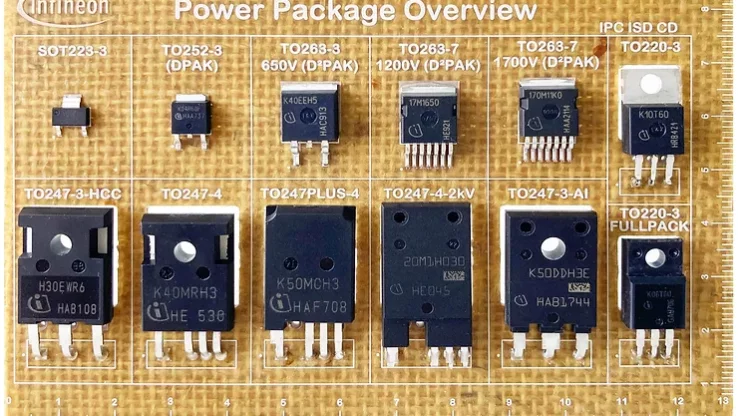How the U.S. and EU Support the Chip Industry
26. October 2022
Semiconductors are at the heart of most modern industrial products. Yet most of the world’s chip production is centered in East Asia. Europe and the U.S. now want to change this and have adopted programs to strengthen their respective semiconductor industries through subsidies, tax breaks, and other incentives. But will that be enough?
Manufacturing microchips is a highly complicated and costly process, and its supply chains are no less complex. In most cases, each phase – whether that is the production of the silicon itself, the creation of wafers from it, or testing of the final product – takes place at a different location. As a result, even the slightest disruption at one of the many stages greatly impacts the rest of the production. The pandemic made it clear just how sensitive value chains are, as factory closures, overloaded ports, and supply bottlenecks took hold. All that said, the disrupted microchip chain doesn’t just affect consumer media such as games consoles and smartphones but extends to key sectors such as healthcare, transportation, energy, security, and defense. No wonder, then, that economies want to return regain control over their own fate after decades of relying on imports. Asia has historically led the charge, but now the West is making moves.
US Subsidies with a Catch
On August 9, 2022, U.S. President Joe Biden signed the CHIPS and Science Act, which is intended to strengthen the U.S. semiconductor supply chain and promote research and development of advanced technologies across the country. The government has vowed to make just short of 53 billion dollars available in handouts to the industry over the next five years. However, if a manufacturer takes advantage of subsidies, it agrees not to expand its business and semiconductor production in China for the following ten years, with a few exceptions.
With this, the U.S. becomes more competitive in the race against the People’s Republic, despite the Chinese recently launching the first seven-nanometer chips. Until recently, it was assumed that the Chinese were about four years behind technologically. Last year, they were still producing 14-nanometer chips. Furthermore, its share of the market is growing. In 2001, it amounted to less than one percent. It rose to more than ten percent in 2010 and is expected to account for a quarter by 2030.
The EU is Fishing for Chips
In a similar move, The European Commission wants to quadruple domestic chip production by 2030, aiming for 20 percent of the global market. To achieve this, it intends to invest 45 billion euros in the development and construction of semiconductor fabrication plants. In addition, measures will be taken to identify bottlenecks in chip supply at an early stage.
With the EU Chips Act, Europe could attract foreign chip giants to produce in Europe – likely with success. The U.S. corporation Intel is planning several locations at once – if the incentive is in place. Even Germany is on the target list with a mega fab planned in Magdeburg. Research and development centers in France, Ireland, Poland, and Spain are also in discussion. Even Taiwan’s TSMC and GlobalWafers have both discussed building in Europe if the financial support from the EU is right. After all, fabs in the West are more expensive to build than in Asia.
However, European manufacturers such as Infineon and STMicroelectronics will also benefit from the European Chips Act. The German technology group and automotive supplier Bosch plans to invest in semiconductor development centers in Reutlingen and Dresden, and STMicroelectronics and GlobalFoundries are tipped to pour nearly six billion euros into a new semiconductor plant in France.
Like the U.S. CHIPS and Science Act, the EU counterpart calls for public subsidies to be followed by private investment. If market leaders can be lured to the West, they might also bring new processes, such as two-nanometer technology, to Europe. In the long term, different parts of the value chain would come together, and a next-generation European chip ecosystem would emerge to meet the need for a more balanced and resilient supply.
But Will It Solve the Problem?
The EU Commission believes that these measures could provide a short-term solution to the shortage. All in all, however, the regulation will not solve the chip shortage problem for good. To catch up with East Asia and the U.S., Europe would have to double its manufacturing capacity by the end of the decade. And that’s if the new plants were all running at full capacity! But even if the financial resources were available, that time frame is hardly feasible. Building chip plants takes many years and is costly even after commissioning. Even expanding existing factories takes up to two years. This is because only a few manufacturers can build the highly specialized equipment required for chip production. They simply wouldn’t be able to keep up with the rising demand.
In addition, the EU primarily provides smaller chips of less than 10 nanometers. However, leading European industries, such as the automotive industry, also have a demand for larger chips of between 10 and 28 nanometers. To meet these needs, Germany and other member states would have to strengthen their expertise in all structural sizes.
Knowledge Determines Success
Despite massive efforts from both the government and private sectors in the EU and U.S., semiconductor trade will continue to be spread across the globe for a very long time to come. According to experts, governments should therefore be less concerned with competition and being independent of East Asia, as it seems they would be fighting a losing battle. Instead, reliance must just be reduced, and a balance established. German industrial fields, for example, cannot function without Chinese imports and therefore needs China as a trading partner.
However, this partnership is certainly not one-sided. After all, Germany supplies China with vital machinery and chemical products necessary for chip production.
According to experts, Europe can no longer win the race for the biggest and best factories. The chip companies will decide where they station themselves, based on whether there is access to raw materials and if there are enough skilled workers available locally. Europe still has a lot of catching up to do here, particularly regarding microchips. Accordingly, it is advisable not to exclusively invest financial resources on chip plants but to let them go into chip design and innovation. The industry must think long-term, which means that knowledge ultimately determines success.


